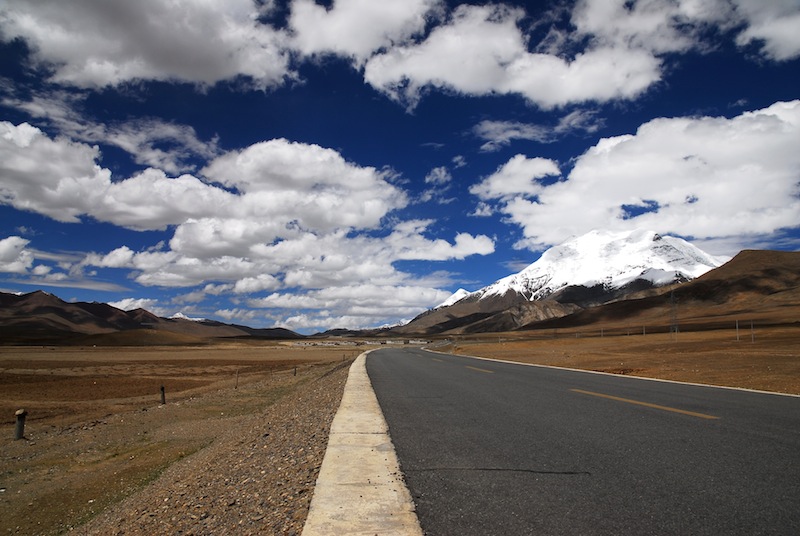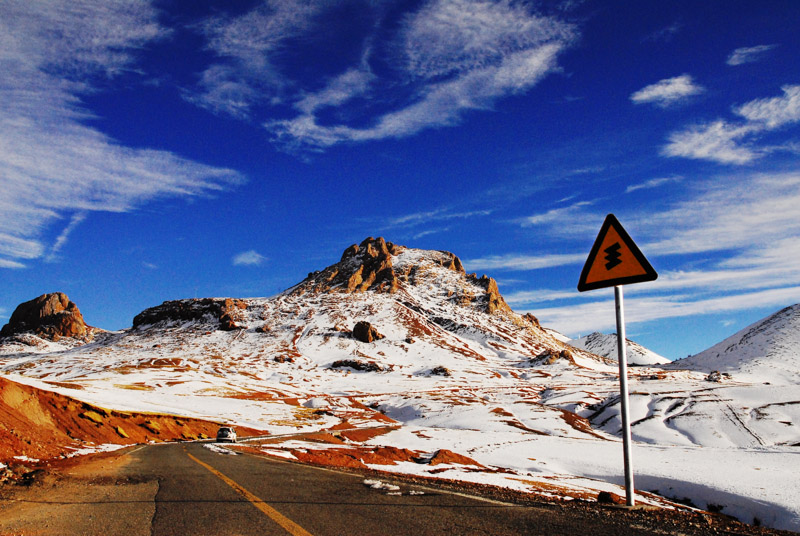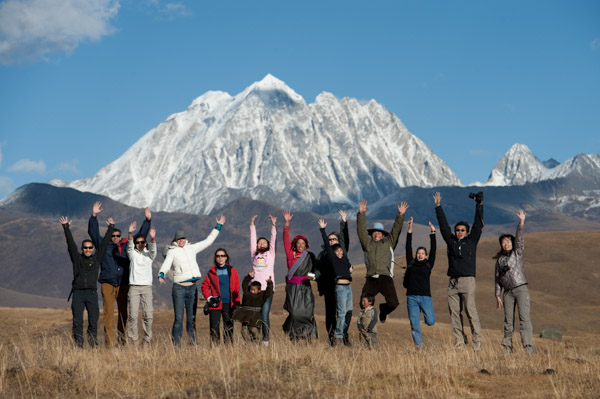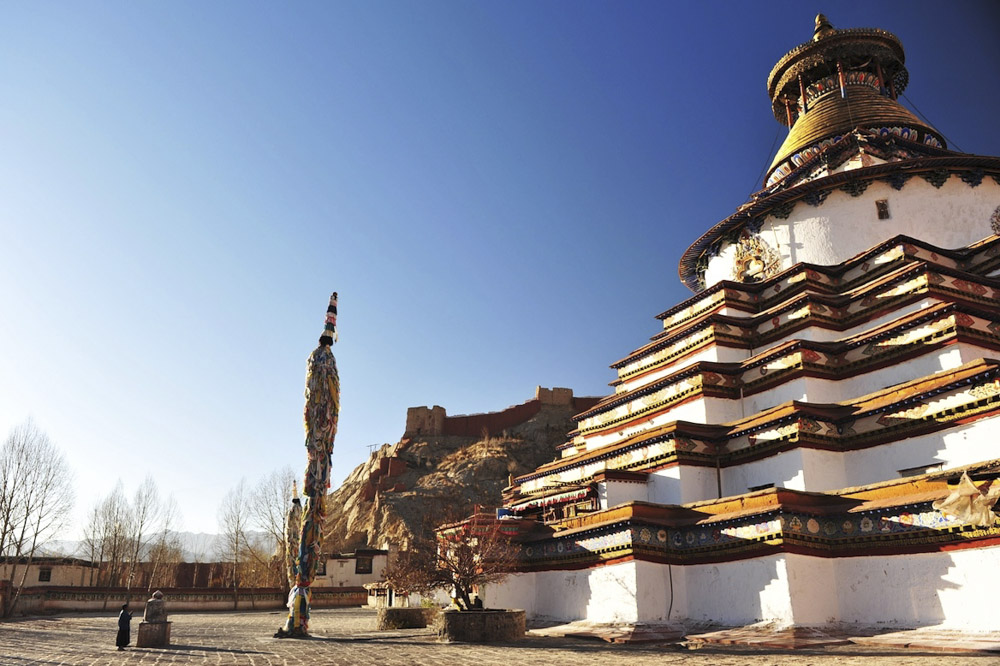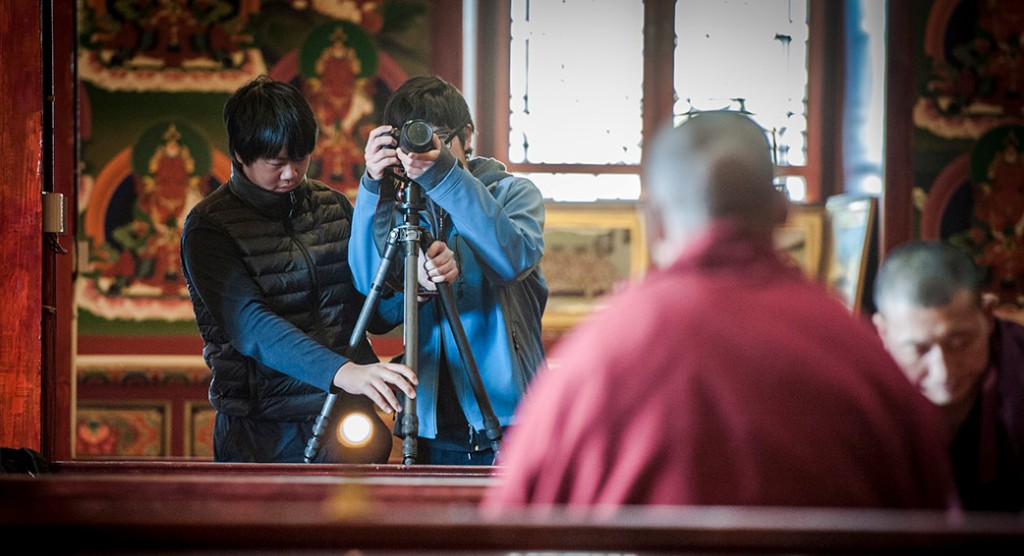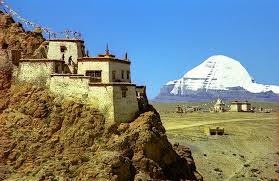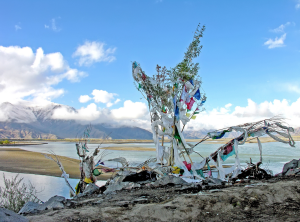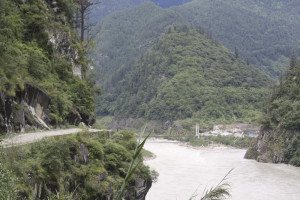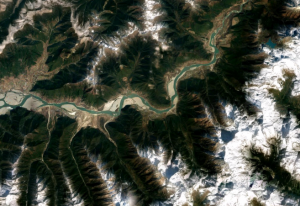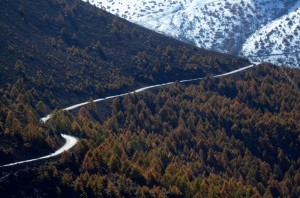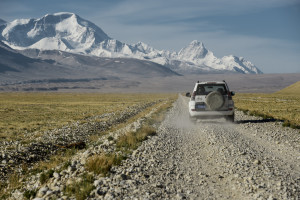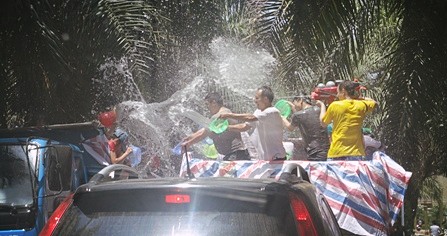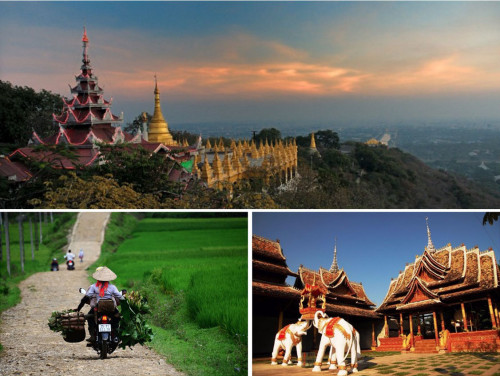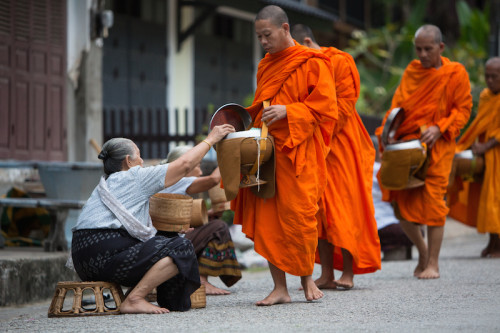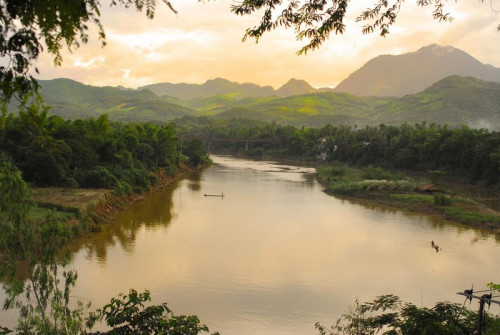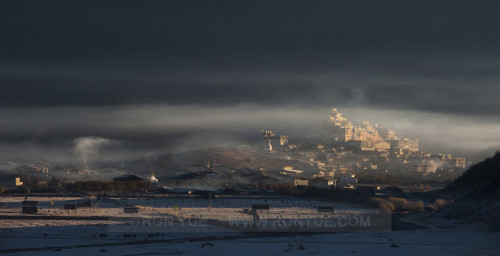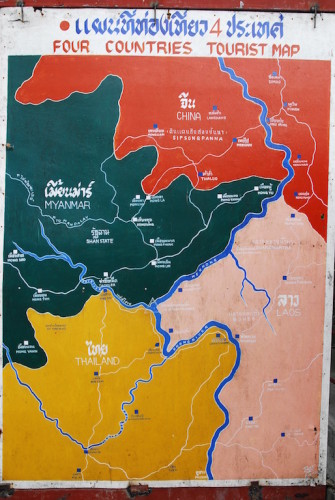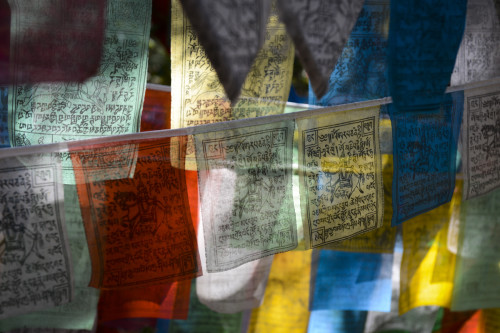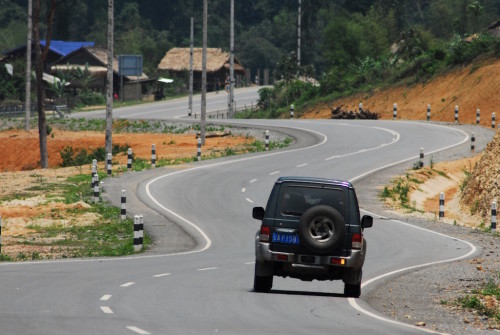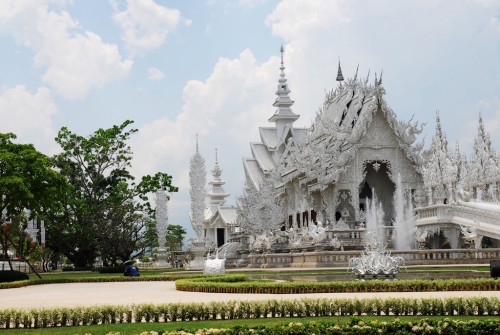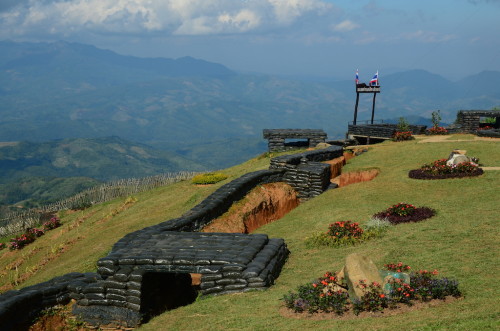Tag Archives: Tibet
Posted on 8 Jun, 2018
Running the gamut from the icy Himalayas to the tropical Golden Triangle, the scenery on our Asian journeys takes some beating. In this week’s story, we share a few wonderful scenic drives in Asia…
Posted on 13 Mar, 2018
There may be plenty to choose from, but we’ve managed to settle on a few spectacular favourites…
Posted on 16 Jan, 2018
From the windswept traces of ancient trade routes to thriving modern marketplaces, the story of commerce in Tibet is a fascinating one. Joanna James finds out more…
Posted on 1 Dec, 2017
Tibet is a richly rewarding place to travel. While there’s always more to discover, we have learned a lot in the last nine years of organising and leading journeys on the Tibetan Plateau.
Here is our guide for first-time visitors…
Posted on 25 Aug, 2017
Whether you’re on the fringes of the Tibetan world in Yunnan or Sichuan,
travelling amongst Qinghai’s yak herders or heading for Tibet’s “big city”, Lhasa, make sure that you leave time for the following, our top ten Tibetan experiences…
Posted on 4 May, 2017
Faces from the Land of Snows
Many of us are nervous when it comes to taking a stranger’s photograph, but portraits often provide the best memories – and the most striking images – from a trip. Professional photographer and our photography coach, Ron Yue presents some of his favourite portraits from Tibet…
|
When travelling on the Tibetan Plateau, one of the most striking things is how devout most people are. Their Buddhist faith decides and drives many aspects of everyday life. The lady with the beautiful coral earrings (below) was pausing mid-kora (prayer circuit) on the Barkhor in Lhasa. To the uninitiated, the Barkhor’s foot traffic seems unceasing, but to Tibetans it is punctuated with holy places and tiny shrines, spaces to stop, reflect and pray.
The Barkhor is Lhasa’s religious heart, but the city is also ringed by great monasteries, each with its own tradition of learning. Here, at Sera, young monks gather each afternoon to debate scripture. Each point is illustrated with a dramatic flourish – the clapping of hands, the stamping of feet and the striking down of their opponent’s point.
These scenes are repeated – with local variations – acoss the Tibetan Plateau, from Yunnan to Ladakh. Below, a lady prays with a mala (a string of 108 prayer beads) wrapped around her fingers, in the dawn light outside the Ganden Sumtseling Monastery, a thousand kilometres east of Lhasa.
It is not just the elderly that follow Buddhist traditions. In fact, many pilgrimages are so strenuous that only the young can attempt them. Below, a teenagerl prostrates herself on the Barkhor kora. After I shot this photograph she stood up, moved two paces forward and lay down again, measuring the length of the circuit with her body. She will complete the kora 108 times like this before her pilgrimage is complete.
Not all religious practices are so arduous though – for the onlookers at least! Below, a man picked from the crowd at Gyantse’s Saga Dawa celebrations is covered with flour by a clown. These clowns are tasked with keeping the audience amused, against a backdrop of solemn religious dances.
Far from Tibet’s towns and monasteries, a nomadic lady (below) welcomed us into her black yak-hair tent. Once common, nomads’ camps are becoming harder to find, as the government encourages the drokpa to move into permanent housing.
As a photographer, these final two images are among my favourites. A young boy in Shigatse shows me how it’s done…
…and a lady decked out in beautiful turquoise and coral jewelry takes a quick snap in Yunnan:
Each time I travel in Tibet I find new inspiration from its incredible landscape and wide open skies, but it’s the memories of connecting with people here that I always remember most fondly. What a special part of the world! |
Our journeys in the Land of Snows…  From Lhasa to Mt. Everest Base Camp… Where do we go? Day 1: Arrive in Kunming What you will discover ⦁ Lhasa, the capital of Tibet with the Potala Palace and the holiest Tibetan temple, the ⦁ Visit the old towns of Gyantse and Shigatse ⦁ Drive along Lake Yamdrok and Lake Namtso, the two holiest lakes in Tibet ⦁ Enjoy an unforgettable view Journey Dossier
————————————  Our ALL NEW, UNIQUE journey from subtropical Lao to the Himalayas…
Where do we go? Day 1: Arrive in Laos What you will discover ⦁ Drive from charming Luang ⦁ Highlights include: Luang Prabang, Xishuangbanna, Meili Snow Mountain, Ranwu Lake, Lhasa and much more in between Journey Dossier ————————————
 Our most magnificent photography trip in Tibet
Where do we go? Day 1: Arrive in Kunming What you will discover ⦁ Lhasa, Mt. Everest, holy lakes, adventure, blue skies, snow-capped mountains, red-robed monks, the Jokhang, the Potala, open roads…a journey for *your* life time! ⦁ Learn how to see beauty and capture moments with Master Photographer Ron Yue and Journey Dossier Stories |
Posted on 13 Apr, 2017
The Yarlung Tsangpo is Tibet’s most important river. We take a whirlwind trip down its course…
A raindrop (or, more likely, a snowflake) falling near Mount Kailash in could have one of three fates. If it lands to the north or west of Tibet’s holiest mountain, it will trickle into the Indus, flow across Ladakh, down the length of Pakistan and into the Arabian Sea. Fall to the south of the mountain and it will promptly cascade out of Tibet into Nepal, and – joining the Ganges – run across northern India, draining through Bangladesh into the Bay of Bengal. Finally, if it lands east of Kailash, our raindrop will join the Yarlung Tsangpo.
|
Tibet’s most important river, the Yarlung Tsangpo flows east across Tibet for two thousand kilometres before it finds a way through the Himalayas and pours into India, where it is known as the Brahmaputra, “Son of Brahma”. A journey along the Yarlung Tsangpo is a journey through Tibet’s most dramatic landscapes as well as through Tibetan history. The young river meanders out of Tibet’s far west through sand dunes in a beautiful and rugged land. Although few live here now, this was once part of the Zhang Zhung kingdom, a pre-Buddhist civilisation that has left a handful of enigmatic ruins and soot-blackened caves near Mount Kailash.
In flowing through more populated regions, our river performs a new purpose. The rocky riverbanks are marked with white ladder-like symbols, showing that a water burial has been held recently. Although Tibetan sky burials are well-known, poorer people more often wrap their dead in cloth and slide the bodies into the river – one important reason why Tibetans do not eat fish.
|
Explore Tibet with our journeys… Lands of Silk & Snow: From Luang Prabang to Lhasa ALL NEW, UNIQUE journey from subtropical Laos to the Himalayas Where do we go? Day 1: Arrive in Laos We also offer shorter version of this journey – 10 & 13 Days What you will discover ⦁ Drive from the charming
Luang Prabang to Lhasa in
Tibet… ⦁ Highlights include: Luang
Prabang, Xishuangbanna, Meili Snow Mountain, Ranwu Lake (然烏湖), Lhasa and much more in between
Journey Dossier – – – – – – – – – – – – – – – – – – – Roads on the Roof of the World From Lhasa to Mt. Everest Base Camp Where do we go? Day 1: Arrive in Kunming What you will discover ⦁ Lhasa, the capital of Tibet
with the Potala Place and the
holiest Tibetan temple, the Jokhang temple ⦁ Visit the old towns of Gyante and Shigatse
⦁ Drive along lake Yamdrok and Lake Namtso, the two holiest in Tibet
⦁ Enjoy an unforgettable view
over the Himalayas and drive
right to the Mt. Everest Basecamp Journey Dossier Stories on Tibet A Glimpse of Everest |
*Botanist Frank Kingdon Ward had this to say about a trip here in the 1920s:
Not only is Pemako extraordinarily difficult to reach from any direction, it is still more difficult to penetrate and explore when reached. Surrounded on three sides by the gorges of the Tsangpo, the fourth is blocked by mighty ranges of snow mountains, whose passes are only open for a few months in the year. Beyond these immediate barriers to east, west and south are trackless forests inhabited by wild unfriendly tribes… Add to this… a climate which varies from the subtropical to the arctic, the only thing common to the whole region being perpetual rain, snakes and wild animals, giant stinging nettles and myriads of biting and blood sucking ticks, hornets, flies and leeches…
The Riddle of the Tsangpo Gorges, Kingdon Ward, 1926

Posted on 6 Sep, 2016
We hope you had enjoyable summer months. For us, July and August were incredibly busy, not so much because of journeys, but because preparations for 2017 are in full swing! Here’s what we’ve been up to and what you can expect to come.
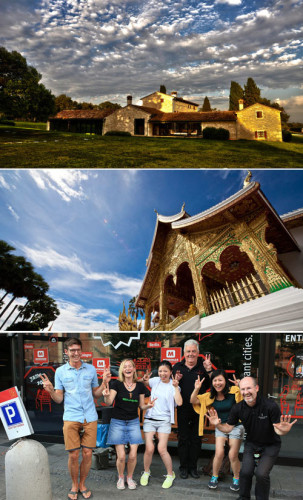 Looking back…
Looking back…
Over the summer, we published some fun reading on our Detours blog:
What a Day?! – Here is a story about a very special day on my most recent research trip in Europe
· Part 1: A holiday? Not exactly…
· Part 2: Impatient to be free…
· Part 3: I know one when I see one…
Jo has written a story about traveling from Luang Prabang in Lao to Lhasa in Tibet…a route that lies at the heart of our new, 2017 “Lands of Silk and Snow” journey (see below).
And Mareen published a story about a day in her life working at On the Road.
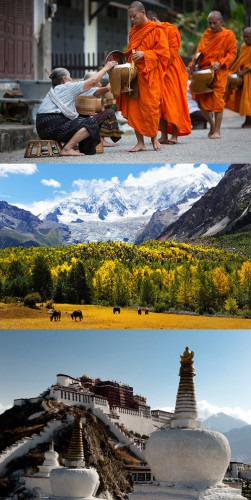 Looking forward…
Looking forward…
In September, we will be announcing two entirely new journeys for 2017.
From Lao to Tibet…
First out of the gate will be “Lands of Silk and Snow: From Luang Prabang to Lhasa”, our entirely new journey to Tibet. Imagine driving from the lush rain forests of Lao to the stupendous mountains of Tibet, from a culture inspired by one form of Buddhism to that inspired by another. For this magical journey you need 16 days, but you can shorten it to 12 days if you skip the Lao portion.
On the other hand, if you want to make it into the journey of a lifetime, then add Roads on the Roof of the World at the end to drive all the way to the Mt. Everest Base Camp. Driving tours don’t get any better than this in Asia!
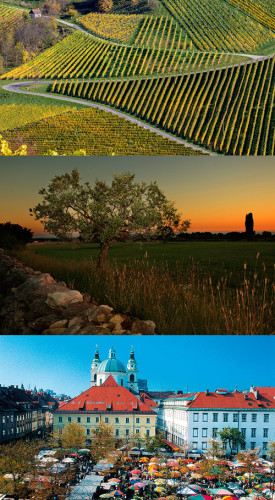 Austrian Hungarian Lands: Vienna, the Adriatic, the Alps and Prague
Austrian Hungarian Lands: Vienna, the Adriatic, the Alps and Prague
And then comes a milestone for us. After several private group journeys in Europe, here we are with our first scheduled European journey you can join in spring or autumn 2017.
If you would like to
· spoil yourself with beautiful hotels,
· eat fine meals (not always Michelin star, but the best these regions have to offer the way “mom used to cook it”),
· drive on some of the world most beautiful roads and
· immerse yourself in the landscapes and cultures of Austria, Slovenia, Croatia and the Czech Republic, there is no better journey in the world.
Travel Inspirations for the coming months…
From now until February, here are some border-crossing journey ideas for you:
-
A Burma Journey: From the Golden Triangle to the Bay of Bengal
-
Drive on back roads through this country that was frozen in time but is now undergoing rapid change…
-
November 9 and February 12
-
-
Asian Border Lands
-
Drive from Yunnan via Lao to northern Vietnam…and experience a region rich in different minority cultures…
-
November 4
-
-
A Christmas Treat: From Shangri-La to the Lanna Kingdom
-
Our flagship Asian journey from the edge of Tibet to Chiang Mai in northern Thailand is even better at Christmas and New Year.
-
It is beautiful as a family adventure, too, a journey that will be unforgettable for you and your children
-
December 22
-
All the best from On the Road Experiences for the lovely month of September!
Posted on 25 Aug, 2016
Early each morning, monks file out from the wats that line Luang Prabang’s loose grid of streets. Clasping their alms bowls, they walk, solemn and barefoot, along streets fringed with shaggy toddy palms, and past candy-coloured colonial villas and gilded temples.
Temperatures climb throughout the day, and most people retreat to the shade to sip cooling drinks and doze before venturing out again at dusk, when a vibrant night market sets up on Sisavangvong Road. Here, stallholders sell souvenirs and shake out bright silk scarves under bluish fluorescent lights as the sun sinks behind far bank of the Mekong.
As you leave Luang Prabang and set out on the road to the Chinese border, the drive punctuated by roadside villages thronging with children, any change seems faint. Three hundred kilometres away, Luang Namtha is clearly cut from the same languid, tropical cloth. Even just across the Chinese border in Xishuangbanna, people believe the same form of Buddhism, practice the same rituals, share the same traditional dress and enjoy very similar spicy-sour flavours in their food.
From Xishuangbanna, where the route of our journey Lands of Silk and Snow briefly reunites with the Mekong, the road climbs up out of the steamy basin where elephants and peacocks once strutted through the jungle, and onto the Yunnan-Guizhou Plateau. As you ascend, the air temperature drops and dries, and the vegetation changes; rubber trees and banana plantations fall away to be replaced by temperate forest and – as we approach Kunming, “the City of Eternal Spring” – fields of flowers.
North of Kunming, the pace of change picks up as you continue to climb up, past Dali and Lijiang to Shangri-La, the threshold of Tibet. From here to Lhasa our route takes us from the dramatic valleys that mark the Tibetan Plateau’s eastern fringe, crossing the Mekong again – and the Yangtze and the Salween – climbing over snow-dusted passes and swooping down through thickly forested valleys before spilling out into the broad Kyi-Chu valley on the final approach to Lhasa.
It is only by travelling overland that you can see how one land merges into the next; how the continuity of the tropics suddenly disappears as one ascends the 1500 metres between Jinghong and Kunming; how the long parallel valleys that run through northwestern Yunnan have given rise to dozens of ethnic groups and amazing biodiversity; and how Tibetan culture has overcome quite awesome geographical challenges in order to spread from Yunnan to the edge of Central Asia.
And yet while there’s change, there are also elements that bind the entire route together. From Laos to Lhasa the main religion is Buddhism – albeit of different schools. Everywhere between Dali and Luang Prabang was once part of a single kingdom in the eighth century. And the waters of the Mekong gather our journey together at several points, like a purse-string, as we travel from South-East Asia, where its waters flow, brown and stately, up to the heights of Tibet where the young river tumbles wildly out of the hills.
Pity the poor traveller who flies over all this! In our busy times of direct flights and high-speed trains, it truly is a luxury to experience a long-distance overland journey, and to see a portion of the earth’s surface up close and personal, and to meet people along your route, at every turn learning that for all that separates us, there is as much that binds us together.
Posted on 6 Jun, 2016
In October 2008, my wife Angie and I spent a few days in northern Thailand. While visiting this part of the Golden Triangle, we chanced upon a rusty map of the region. “Look,” I said to Angie, “two months ago I was here,” as I pointed to Xishuangbanna, the southernmost region of China’s Yunnan Province. (‘Xishuangbanna’, 西双版纳, is the sinicised version of the Thai word Sipsong Panna ( สิบสองปันนา) and means ‘twelve thousand rice fields’.)
“So close, eh?” Angie mused, “I wonder whether you could drive from there to here. Wouldn’t that be something?!”
“You’ve got to be kidding me,” I replied, “There’s borders to cross and who knows if there’s even a road.” Having only just managed to organise our first driving journeys in China, the idea of crossing borders seemed, to me, unfathomable. In those days, whenever an idea came up, my brain was inevitably troubled by the question of how to make it happen, and from that often flowed a stream of reasons why it couldn’t be done. Angie, by contrast, is seldom bothered by such details.
Later that day I reluctantly pursued the idea with her. Wouldn’t it be something to drive from the foothills of the Tibetan Plateau in northern Yunnan down through Laos and the Golden Triangle to Chiang Mai, and to see China merge into South-East Asia, turn by winding turn? It was a powerful idea, but “how?”
***
I grew up in another Golden Triangle of sorts, in Bregenz, a small town by the eastern shore of Lake Constance where Germany, Austria, and Switzerland meet. No opium poppies there, I can assure you: the only sources of inspiration are reflections in crystal-clear lakes and the herb-scented mountain air.
Shopping in Switzerland? Lunch in Germany? Dinner in Austria? All in one day? Easy! As I child I regarded driving across borders as an everyday occurrence, but since moving to Asia I have gained a newfound appreciation for the romance – and administrative complexities – that such overland journeys can inspire.
***
Fast forward to April 2009. Angie and I have just landed in Shangri-La. The sky is overcast and snowfall has dusted the hilltops. While eating breakfast we meet the hotel manager and tell her about the journey we are about to make. Her eyes light up, “If you enjoy driving, then you must take the back road to Lijiang – let me show you…” I finish my toast in one bite and drain my coffee cup while Angie knocks back a motion sickness pill. And then we’re on our way.
The main road from Zhongdian to Lijiang is shown on my map as a thick red line. The road that we take is shown as a single pencil-thin line, snaking between the two towns. The hotel manager was right – the road is incredibly beautiful, winding over high passes before descending to the Yangtze at Tiger Leaping Gorge, where the river roars through a deep gorge beneath looming cliffs.
After arriving in Lijiang that evening, we wander the cobbled streets, bemused at the sheer number of people visiting this UNESCO World Heritage Site. From Lijiang we drive south along excellent highways to Dali, on the shore of Lake Erhai, and then to Kunming and south again to Jinghong, the largest town in Xishuangbanna.
By the time we arrive in sleepy Jinghong, with its palm tree-lined streets and Thai-style temples, it’s clear that we are on the edge of South-East Asia. The region’s main ethnic minority, the Dai, are closely related to the Thais and in the countryside we drive past groups of sarong-clad Dai women with flowers in their hair.
From Jinghong we continue our drive on another wonderful road to the China–Laos border at Mohan, where we make a bit of history: Angie and I are, according to everyone we ask, the first Westerners to drive a China-registered rental car across this border. What I had taken for granted back in the “Golden Triangle” of my youth does, indeed, mean making history here…
In Laos, Route 3 connects the China-Laos border with Huay Sai on Laos’ border with Thailand, cutting south-west diagonally across the country. At that time, Route 3 had been recently rebuilt, and the modern road contrasted starkly with the villages it runs through, where villagers’ lives seem untouched by the twenty-first century.
Later the same day we arrive at Huay Sai and take a rickety looking car ferry to Chiang Khong on the Thai side of the border. After a long day – driving in three countries and over 400 kilometres – Angie and I treat ourselves to a stay at the lovely Anantara Golden Triangle resort.
The next morning, wholly refreshed, we drive back up to the map of the Golden Triangle, where Angie had had her idea six months previously. We look at the battered map in its rusty frame before turning and gazing out towards Burma and Laos, shaking our heads and agreeing “Now, that really was something…”
Never, ever let questions of “How?” stand in way of pursuing your ideas!
Since that first trip, we now have multiple crossing-border itineraries in Asia allowing you to step into our footsteps:
- Yunnan via Laos to Thailand
- From Shangri-La to the Lanna Kingdom is exactly the itinerary that Angie and I explored in 2009.
- From Yunnan to the Lanna Kingdom starts “further down” in Kunming, the capital of Yunnan, but includes the “Mirrors of God” Yuanyang rice terraces, a must-see once in your life.
- Yunnan via Laos to Vietnam – Our Summit to Sea itinerary takes you from one UNESCO World Heritage old town, Lijiang, in Yunnan to another, Hoi An, right by the South China Sea.
- Burma – Our From the Golden Triangle to the Bay of Bengal itinerary is a magical exploration of Burma, including out-of-the-way, hidden gems and well-known, must-see stops.
